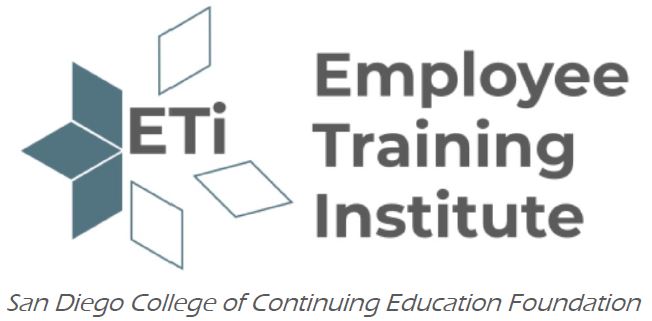Online Medical Assistant Training
If you’re interested in a rewarding career in healthcare, becoming a medical assistant could be the right move for you! Through CareerStep’s online Medical Assistant Training, you’ll work to develop the essential knowledge and skills that can help you be successful on the job. You’ll cover topics like anatomy and physiology, phlebotomy, EKG, and patient care. Additionally, you’ll learn about venipuncture and receive a venipuncture kit as part of your program. Then, you’ll apply everything you’ve learned to real-world situations in your clinical externship!
Registration and Enrollment
This course is 100% online. Start anytime!
Program Details
Our online medical assistant program is developed by industry professionals with decades of real-world experience. Throughout your courses, you’ll cover both patient care and clinical office procedures. You’ll also learn essential skills like phlebotomy and venipuncture, and you’ll even receive a venipuncture kit as part of your program to help you strengthen your skills. But it’s way more than just training. Thanks to our vast network of partners, you’ll get 100 hours worth of experience working in a clinical setting—empowering you with the knowledge to earn the Certified Clinical Medical Assistant (CCMA), Certified Phlebotomy Technician (CPT), and Certified EKG Technician (CET) credentials. Remember that clinical opportunities vary, and we work with a vast network of healthcare organizations to find a good fit. But we can’t guarantee placement—or employment—in your area.
What You’ll Learn
Everything you need to get certification-ready with our Medical Assistant program online and start working soon, with total confidence.
- Body Basics
Get familiar with essential anatomy, foundational healthcare science, and medical terminology.
- Patient Care
Learn how to obtain vital signs and perform a variety of skills to assist with patient care.
- Medical Procedures
See how to perform phlebotomy and EKG reading, label and process specimens, and assist physicians with procedures.
- Office Administration
Understand medical-record management, insurance reimbursements, and how to successfully operate patient waiting rooms.
- Medical Assistant Career Introduction
- HealthCare Foundational Knowledge and Basic Science
- Anatomy and Physiology Essentials
- General Patient Care
- Pharmacology Basics for Medical Assisting
- Infection Control
- Testing and Laboratory Procedures
- Patient Care Coordination and Education
- Medical Administrative Assistant
- Communication and Customer Service in the Healthcare Office
- Comprehensive Electronic Health Records
- Medical Laws and Ethics
- Phlebotomy
- Venipuncture Labs
- EKG and Cardiovascular
- Career Success in Healthcare
- Medical Assistant Final Exam
- Fundamentals of HIPAA
- Initiating Your Externship
- Clinical Externship Experience
- Program Completion: Medical Assistant
The medical assistant program includes lots of rich, visual course materials. You’ll learn intuitively through videos and images, training games, and highly interactive instructional simulations. The content is designed to help you “get it” quickly. Complete your online training, then pair your newfound knowledge with priceless experience through clinical training. It’ll give you the needed practice with patient care, phlebotomy, EKG, and medical office administration.
- 12 months of full program access
- 100 hours of clinical externship
Our have-it-your-way training is always on—because it’s online. 24/7 access gives you the freedom and flexibility to study on your schedule and at your pace.
- Learn from home (or anywhere)
- Study online (anytime)
We’re excited that you’ve decided to go after your medical assisting career goal, and we’re backing you every step of the way. Reach out to us any time with your questions, comments, rants, boasts, or jokes.
- One-on-one support
- Phone, live chat, and email
Medical Assistant Certifications
- Certified Clinical Medical Assistant (CCMA)
- Verify your competence in patient care with the CCMA from the National Healthcareer Association.
- Verify your competence in patient care with the CCMA from the National Healthcareer Association.
- Verify your competence in patient care with the CCMA from the National Healthcareer Association.
- Certified EKG Technician (CET)
- Prove your proficiency with EKGs, stress tests, and Holter monitoring with the CET from the National Healthcareer Association.
- Certified Phlebotomy Technician (CPT)
- Demonstrate your capability to do intravenous blood draws with the CPT from the National Healthcareer Association.
This program includes unparalleled training, career support, and coaching. It’s a faster, cheaper alternative to traditional schooling.
- $3,799.00 for full program access
Job Outlook
Healthcare is growing at a faster pace than other industries, creating lots of job opportunities nationwide. The Bureau of Labor Statistics estimates that the demand for medical assistants will grow 16% in the next 10 years.
You can earn a great income with job security and plenty of upward mobility. Salaries vary by employer, location, and experience, but according to the Bureau of Labor Statistics, medical assistants earn between $29,070 and $48,170 per year. Plus, considering the nature of the industry, medical assistant jobs often include healthcare benefits.*
FAQs
Are clinical hours included in my training?
Clinical hours are an essential component of your training—particularly as you work towards certification and potential employment. They give you a chance to test your current skill level and put all your new knowledge to work in real-world settings. That’s why we work with a vast network of healthcare organizations to provide these hands-on learning experiences. Please keep in mind that while clinical hours are included as part of your course, placement is based on a number of factors—including geography and availability—so we can’t guarantee that you’ll find placement in your area.
What will I do as a medical assistant?
A lot. You’ll support doctors, nurses, and other health professionals in medical settings, performing both clinical and administrative tasks. In other words, you’ll play a vital role in keeping healthcare facilities running smoothly. You’ll be hands-on with everything from wound care, phlebotomy, and EKGs to greeting and scheduling patients, managing medical records, and processing health insurance payments.
How much can I make as a medical assistant?
You can earn a great income with job security and plenty of upward mobility. Salaries vary by employer, location, and experience, but according to the Bureau of Labor Statistics, the average salary for medical assistants is $37,190 per year.* And, considering the nature of the industry, medical assistant jobs often include healthcare benefits.
What’s the job market like?
The Bureau of Labor Statistics estimates that the demand for medical assistants will increase 16% in the next 10 years. There were over 117,800 medical assistant jobs posted in just the last 12 months!*
Do I have to be certified to work?
Yes and no. While California, Connecticut, Montana, New Jersey, and Washington have certification requirements, most states don’t require medical assistant certification. However, the U.S. Bureau of Labor Statistics reports that employers prefer to hire certified medical assistants.* Being certified as a medical assistant as well as a Phlebotomy Technician and EKG Technician gives you a competitive advantage and maximizes your earning potential.
This program prepares you for the following certifications:
- Certified Clinical Medical Assistant (CCMA)
- Certified Phlebotomy Technician (CPT)‡
- Certified EKG Technician (CET)‡
‡ Requires some additional hands-on work which is included in your externship: 30 venipunctures + 10 capillary sticks for CPT; 10 EKGs on “real people” for CET.
They are amazing. They helped me achieve my dream of becoming a medical assistant. With flexible hours, teachers always there to help, and most of all—opportunity. I couldn’t have picked better (training) to achieve my goals.
Heather H.
*Bureau of Labor Statistics, U.S. Department of Labor. “Medical Assistants.” Occupational Outlook Handbook. Accessed March 9, 2023.
Statements found in the United States Department of Labor Occupational Outlook Handbook are not a guarantee of any post-graduation salary, in part because the data used to create the Occupational Outlook Handbook includes workers from differing educational backgrounds, levels of experience, and geographic areas of the country.

